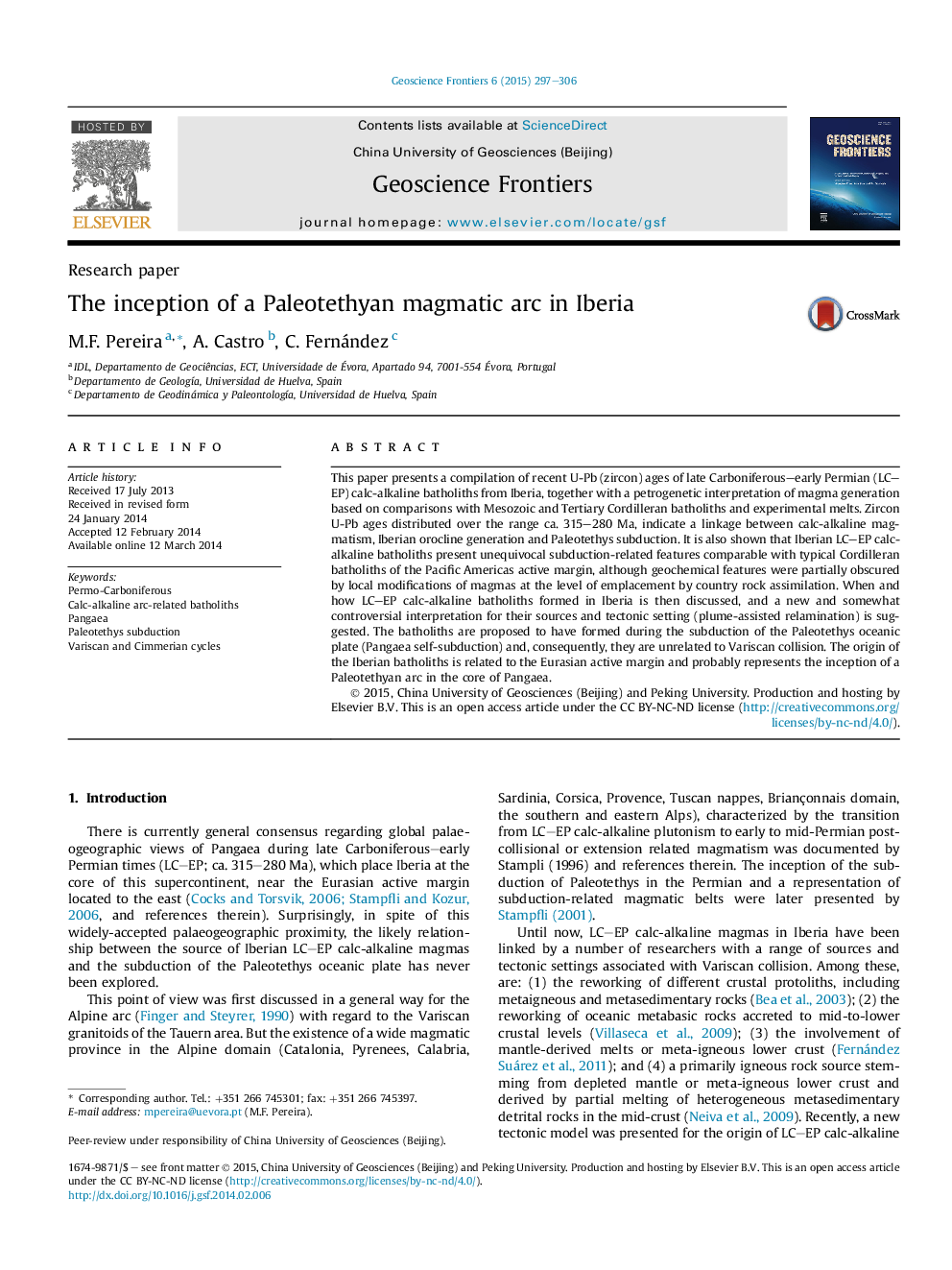| Article ID | Journal | Published Year | Pages | File Type |
|---|---|---|---|---|
| 4681638 | Geoscience Frontiers | 2015 | 10 Pages |
•Iberia includes voluminous Permo-Carboniferous calc-alkaline batholiths.•The Iberian batholiths are compatible with the generation of new crust in arcs.•The origin of Iberian batholiths is related to the inception of a Paleotethyan arc in the core of Pangaea.
This paper presents a compilation of recent U-Pb (zircon) ages of late Carboniferous–early Permian (LC–EP) calc-alkaline batholiths from Iberia, together with a petrogenetic interpretation of magma generation based on comparisons with Mesozoic and Tertiary Cordilleran batholiths and experimental melts. Zircon U-Pb ages distributed over the range ca. 315–280 Ma, indicate a linkage between calc-alkaline magmatism, Iberian orocline generation and Paleotethys subduction. It is also shown that Iberian LC–EP calc-alkaline batholiths present unequivocal subduction-related features comparable with typical Cordilleran batholiths of the Pacific Americas active margin, although geochemical features were partially obscured by local modifications of magmas at the level of emplacement by country rock assimilation. When and how LC–EP calc-alkaline batholiths formed in Iberia is then discussed, and a new and somewhat controversial interpretation for their sources and tectonic setting (plume-assisted relamination) is suggested. The batholiths are proposed to have formed during the subduction of the Paleotethys oceanic plate (Pangaea self-subduction) and, consequently, they are unrelated to Variscan collision. The origin of the Iberian batholiths is related to the Eurasian active margin and probably represents the inception of a Paleotethyan arc in the core of Pangaea.
Graphical abstractFigure optionsDownload full-size imageDownload as PowerPoint slide
